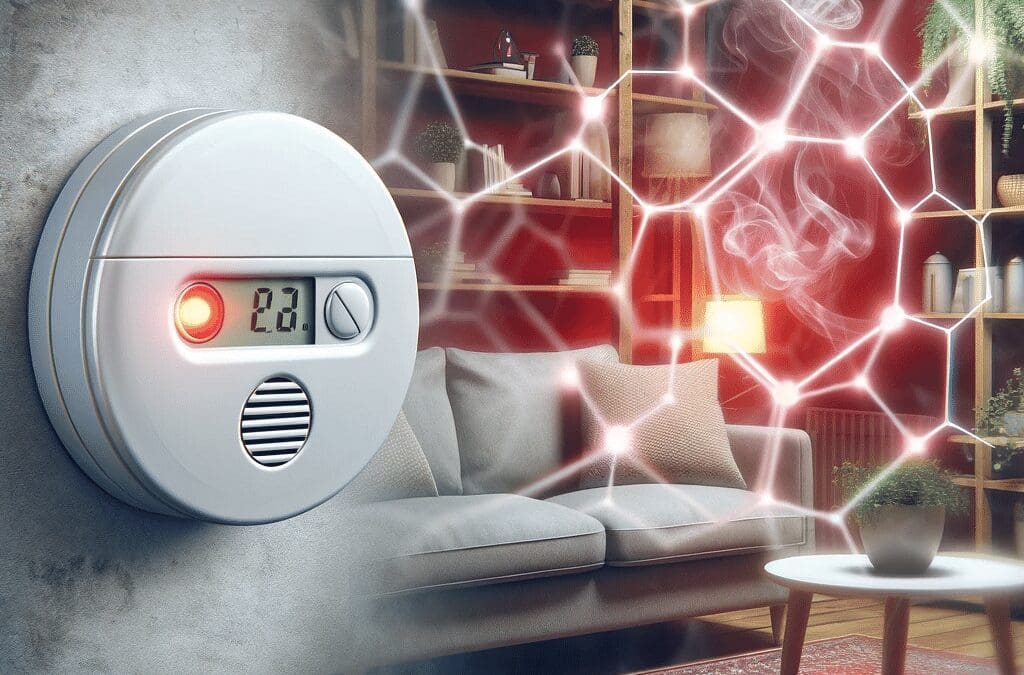
The Silent Killer: Understanding Carbon Monoxide in the Home
The Silent Killer: Understanding Carbon Monoxide in the Home
Carbon monoxide (CO) is a colorless, odorless, and tasteless gas that can cause sudden illness and death if inhaled in large amounts. Often referred to as the “silent killer,” it’s a pervasive and deadly threat in homes, usually going unnoticed until it’s too late. Understanding carbon monoxide, its sources, effects, and prevention measures is crucial for maintaining a safe living environment. This article will delve into the various aspects of carbon monoxide in the home, providing essential knowledge and practical advice to protect yourself and your loved ones.
Outline
- What is Carbon Monoxide and Why is it Dangerous?
- Nature of Carbon Monoxide
- Health Risks Associated with CO Exposure
- How Does Carbon Monoxide Accumulate in Homes?
- Common Sources of CO in Households
- Factors Contributing to Unsafe Levels
- Recognizing the Symptoms of Carbon Monoxide Poisoning
- Early Warning Signs
- Long-term Health Effects
- Carbon Monoxide vs. Other Household Gases
- Differences Between CO and Natural Gas
- Understanding the Risks
- Prevention: Keeping Your Home Safe from CO
- Ventilation and Appliance Maintenance
- The Role of CO Detectors
- First Aid and Emergency Response for CO Poisoning
- Immediate Steps to Take
- Seeking Medical Attention
- Legal Standards and Building Codes Related to CO
- Regulations and Compliance
- Importance of Adhering to Safety Standards
- Technological Advancements in CO Detection
- Modern CO Detectors and Alarms
- Smart Home Integration
- Educating Your Family About Carbon Monoxide
- Discussing CO Safety with Children
- Creating a Family Safety Plan
- Carbon Monoxide Poisoning: Myths vs. Facts
- Debunking Common Misconceptions
- Relying on Verified Information
Key Takeaways
- Carbon monoxide’s nature and dangers
- Prevention and detection strategies
- Importance of awareness and education
What is Carbon Monoxide and Why is it Dangerous?
Nature of Carbon Monoxide
Carbon monoxide is a byproduct of incomplete combustion of fossil fuels. It’s produced when materials containing carbon, like oil, gas, coal, wood, or charcoal, are burned. The danger of CO lies in its ability to bind with hemoglobin in the blood, reducing oxygen delivery to the body’s organs and tissues.
Health Risks Associated with CO Exposure
Exposure to carbon monoxide can cause a range of health issues, from mild symptoms like headaches and dizziness to severe consequences like unconsciousness and, in extreme cases, death. Prolonged exposure to lower levels of CO can also lead to chronic health problems.
How Does Carbon Monoxide Accumulate in Homes?
Common Sources of CO in Households
In homes, CO is commonly produced by heating systems, gas stoves, fireplaces, water heaters, and vehicles left running in attached garages. Faulty, improperly used, or unmaintained appliances are significant contributors to CO buildup.
Factors Contributing to Unsafe Levels
Poor ventilation, blocked chimneys, and malfunctioning appliances can lead to dangerous accumulations of carbon monoxide. Seasonal factors, like using heaters during winter, can also increase the risk.
Call Working Class HVAC Today
Your content goes here. Edit or remove this text inline or in the module Content settings. You can also style every aspect of this content in the module Design settings and even apply custom CSS to this text in the module Advanced settings.

The Silent Killer: Understanding Carbon Monoxide in the Home
Recognizing the Symptoms of Carbon Monoxide Poisoning
Early Warning Signs
The initial symptoms of CO poisoning are often mistaken for flu or food poisoning, including headaches, fatigue, nausea, and dizziness. Recognizing these early signs can be life-saving.
Long-term Health Effects
Chronic exposure to low levels of CO can lead to more serious health issues like heart disease, brain damage, and memory problems. Pregnant women, children, and the elderly are particularly vulnerable.
Carbon Monoxide vs. Other Household Gases
Differences Between CO and Natural Gas
Unlike natural gas, which has an added odorant for detection, carbon monoxide is completely odorless and invisible. This makes it far more insidious and difficult to detect without proper equipment.
Understanding the Risks
Both gases pose significant risks but require different detection and response strategies. Awareness of the distinct properties and dangers of each is crucial for home safety.
Prevention: Keeping Your Home Safe from CO
Ventilation and Appliance Maintenance
Ensuring good ventilation in your home and regular maintenance of fuel-burning appliances are key steps in preventing CO buildup. This includes annual inspections of heating systems, chimneys, and flues.
The Role of CO Detectors
Installing carbon monoxide detectors in key areas of your home is a vital safety measure. They provide an early warning system, alerting you to the presence of CO before it reaches dangerous levels.
First Aid and Emergency Response for CO Poisoning
Immediate Steps to Take
If you suspect carbon monoxide poisoning, immediately evacuate the affected area. Fresh air is crucial, so opening windows and doors as you leave can help dissipate some of the gas. It’s essential not to delay evacuation, as CO poisoning can rapidly become life-threatening.
Seeking Medical Attention
After reaching safety, seek medical attention immediately, even if you don’t feel sick. CO poisoning can have delayed effects, and a medical evaluation is necessary. Inform the healthcare professionals that you suspect CO exposure, as this will guide their assessment and treatment.
Legal Standards and Building Codes Related to CO
Regulations and Compliance
Many regions have specific legal standards and building codes regarding carbon monoxide detectors and ventilation systems. These laws are designed to ensure the safety of residents by mandating the installation of CO detectors and the regular inspection of appliances.
Importance of Adhering to Safety Standards
Compliance with these standards is not just a legal requirement but a critical aspect of home safety. Regularly checking that your home meets these standards can prevent CO-related incidents and provide peace of mind.
Technological Advancements in CO Detection
Modern CO Detectors and Alarms
Advancements in technology have led to more sophisticated carbon monoxide detectors. These modern detectors are more sensitive, reliable, and can provide features such as digital readouts, smart home integration, and even connectivity to emergency services.
Smart Home Integration
Integrating CO detectors with smart home systems allows for real-time monitoring and alerts, even when you’re not at home. This can be particularly useful for protecting vulnerable individuals or monitoring properties remotely.
Educating Your Family About Carbon Monoxide
Discussing CO Safety with Children
It’s important to educate all family members, including children, about the dangers of carbon monoxide. Simple explanations about the importance of detectors and what to do in case of an alarm can be life-saving.
Creating a Family Safety Plan
Develop a family safety plan that includes steps to take in case of a CO alarm. This plan should include safe evacuation routes, emergency contact numbers, and a designated meeting place outside the home.
Carbon Monoxide Poisoning: Myths vs. Facts
Debunking Common Misconceptions
There are many myths surrounding carbon monoxide, such as the belief that it’s detectable by certain symptoms or that it rises like smoke. Dispelling these myths is crucial for proper understanding and response.
Relying on Verified Information
Always seek information from reliable sources, such as health departments or fire safety professionals, to ensure that your knowledge about carbon monoxide is accurate and up-to-date.
Conclusion: Key Takeaways
- Carbon monoxide is a silent, invisible killer that can be produced by everyday appliances.
- Recognizing early symptoms of CO poisoning and having a prompt response plan is crucial.
- Regular maintenance of appliances and proper ventilation are key preventive measures.
- Legal standards and building codes should be followed for CO detector installation.
- Educate all family members about CO risks and have a safety plan in place.
- Technology advancements in CO detection offer enhanced safety features.
- Dispel myths and rely on verified information for CO safety awareness.
Call Working Class HVAC Today
Your content goes here. Edit or remove this text inline or in the module Content settings. You can also style every aspect of this content in the module Design settings and even apply custom CSS to this text in the module Advanced settings.



